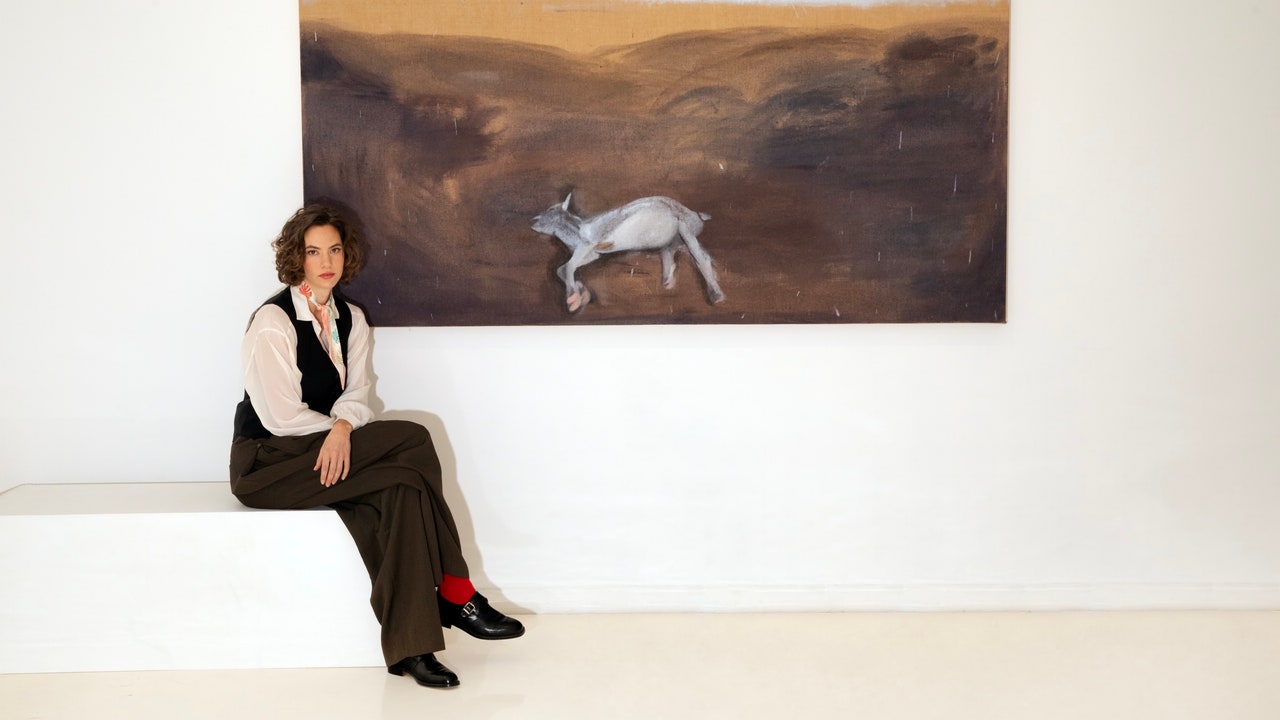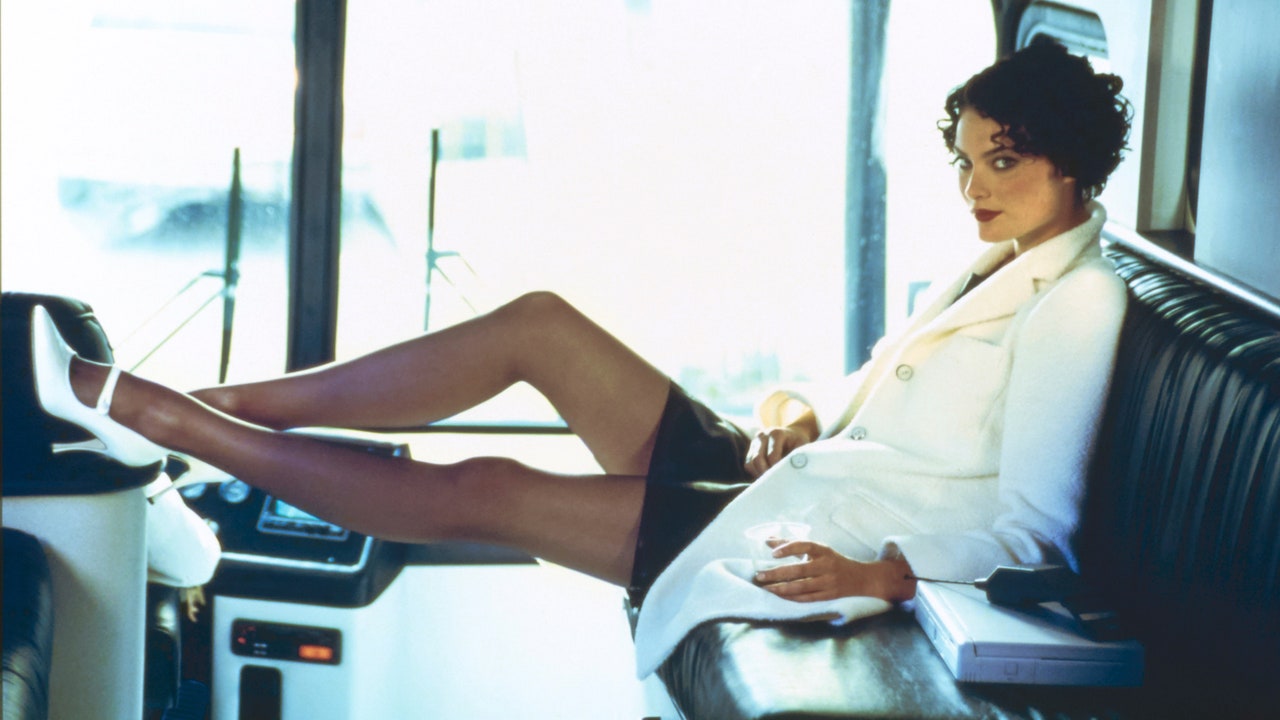On a blisteringly chilly New York day, Emma Kathleen Hepburn Ferrer stands in Tribeca’s Sapar Modern gallery on North Moore Avenue, the positioning of her first solo exhibition, “The Scapegoat” (on view by means of February 15). Comprising 15 contemplative works, the present explores themes of sacrifice, spirituality, and humanity’s intricate connection to nature, encapsulated by the biblical and mythological symbolism of the lamb.
Strolling me by means of the white-cube area, Ferrer, 30, is wearing outsized classic males’s trousers that she had tailor-made to her body, a pointy button-up, a males’s vest, and a silk neckerchief patterned with palm fronds. It’s a glance that feels relatively Katharine Hepburn-esque for a direct descendant of the different Hepburn: Ferrer’s father is Sean Hepburn Ferrer, Audrey Hepburn’s son with the actor Mel Ferrer.
Born in Switzerland, Ferrer spent her childhood between Los Angeles and Italy. Her creative journey started early. “I at all times took drawing and portray lessons from after I was actually younger, so long as I can bear in mind,” she says. By the age of 18, she had been accepted into the distinguished Superior Portray program on the Florence Academy of Artwork, the place she would immerse herself within the methodologies of the previous masters, delving into nonetheless lifes and human anatomy.
After finishing her foundational coaching, Ferrer relocated to New York Metropolis in 2015. She stayed for six years, working in numerous positions throughout the artwork world, together with as an intern on the very gallery now internet hosting her debut. “Ten years later, to have my very own present right here is de facto unbelievable,” she says.
The pandemic, nonetheless, prompted a return to Europe, the place Ferrer transformed a small guesthouse in a secluded Tuscan city into her studio. “It’s vital to have a devoted area to create. In New York, I didn’t have that,” she says. “My studio overlooks the valley and the ocean—it’s actually stunning. Dwelling there made me understand how deeply intertwined my apply is with nature and the setting round me.”
That affect is clear all through “The Scapegoat.” Rendered in muted palettes and delicate brushstrokes, Ferrer’s scenes are ethereal and emotive: Simply take At Sea (2024), wherein a lone lamb adrift on a small boat evokes a profound sense of loneliness (“It’s about empathy for this harmless little sufferer that has been betrayed by people,” Ferrer tells me), or Agnus Dei (2024), that includes a lamb at relaxation on a crimson material—a young but haunting nod to the present’s overarching theme of sacrifice.


